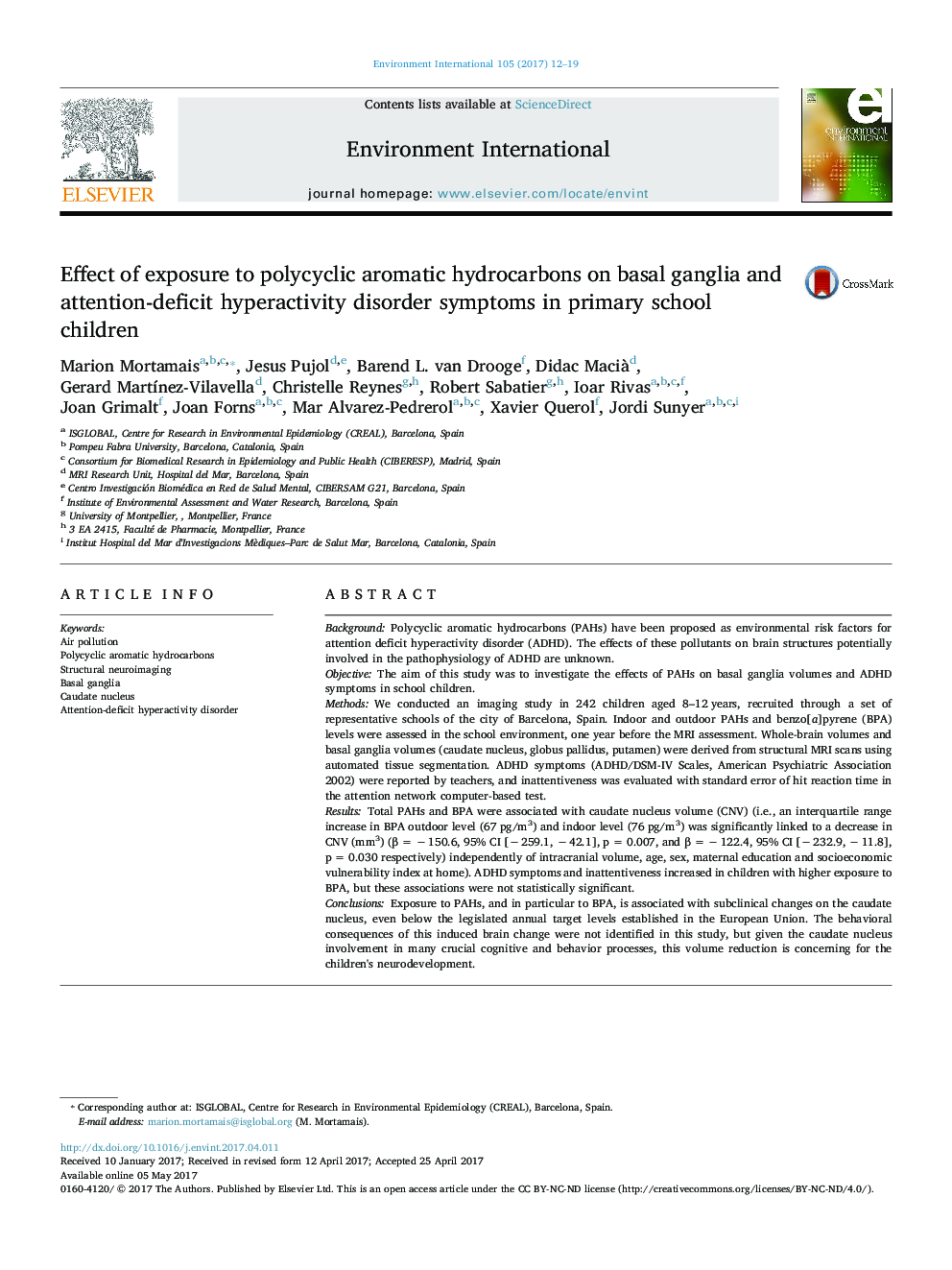| کد مقاله | کد نشریه | سال انتشار | مقاله انگلیسی | نسخه تمام متن |
|---|---|---|---|---|
| 5748435 | 1619025 | 2017 | 8 صفحه PDF | دانلود رایگان |
- PAHs exposure has been associated with ADHD symptoms.
- We investigated the PAHs effects on the brain's structures involved in ADHD.
- Exposure to PAHs is associated with reduction in the caudate nucleus volume.
- Traffic-related air pollution may adversely affect neurodevelopment.
- Exposure to PAHs is associated with a reduction in the caudate nucleus volume.
BackgroundPolycyclic aromatic hydrocarbons (PAHs) have been proposed as environmental risk factors for attention deficit hyperactivity disorder (ADHD). The effects of these pollutants on brain structures potentially involved in the pathophysiology of ADHD are unknown.ObjectiveThe aim of this study was to investigate the effects of PAHs on basal ganglia volumes and ADHD symptoms in school children.MethodsWe conducted an imaging study in 242 children aged 8-12 years, recruited through a set of representative schools of the city of Barcelona, Spain. Indoor and outdoor PAHs and benzo[a]pyrene (BPA) levels were assessed in the school environment, one year before the MRI assessment. Whole-brain volumes and basal ganglia volumes (caudate nucleus, globus pallidus, putamen) were derived from structural MRI scans using automated tissue segmentation. ADHD symptoms (ADHD/DSM-IV Scales, American Psychiatric Association 2002) were reported by teachers, and inattentiveness was evaluated with standard error of hit reaction time in the attention network computer-based test.ResultsTotal PAHs and BPA were associated with caudate nucleus volume (CNV) (i.e., an interquartile range increase in BPA outdoor level (67 pg/m3) and indoor level (76 pg/m3) was significantly linked to a decrease in CNV (mm3) (β = â 150.6, 95% CI [â 259.1, â 42.1], p = 0.007, and β = â 122.4, 95% CI [â 232.9, â 11.8], p = 0.030 respectively) independently of intracranial volume, age, sex, maternal education and socioeconomic vulnerability index at home). ADHD symptoms and inattentiveness increased in children with higher exposure to BPA, but these associations were not statistically significant.ConclusionsExposure to PAHs, and in particular to BPA, is associated with subclinical changes on the caudate nucleus, even below the legislated annual target levels established in the European Union. The behavioral consequences of this induced brain change were not identified in this study, but given the caudate nucleus involvement in many crucial cognitive and behavior processes, this volume reduction is concerning for the children's neurodevelopment.
Journal: Environment International - Volume 105, August 2017, Pages 12-19
